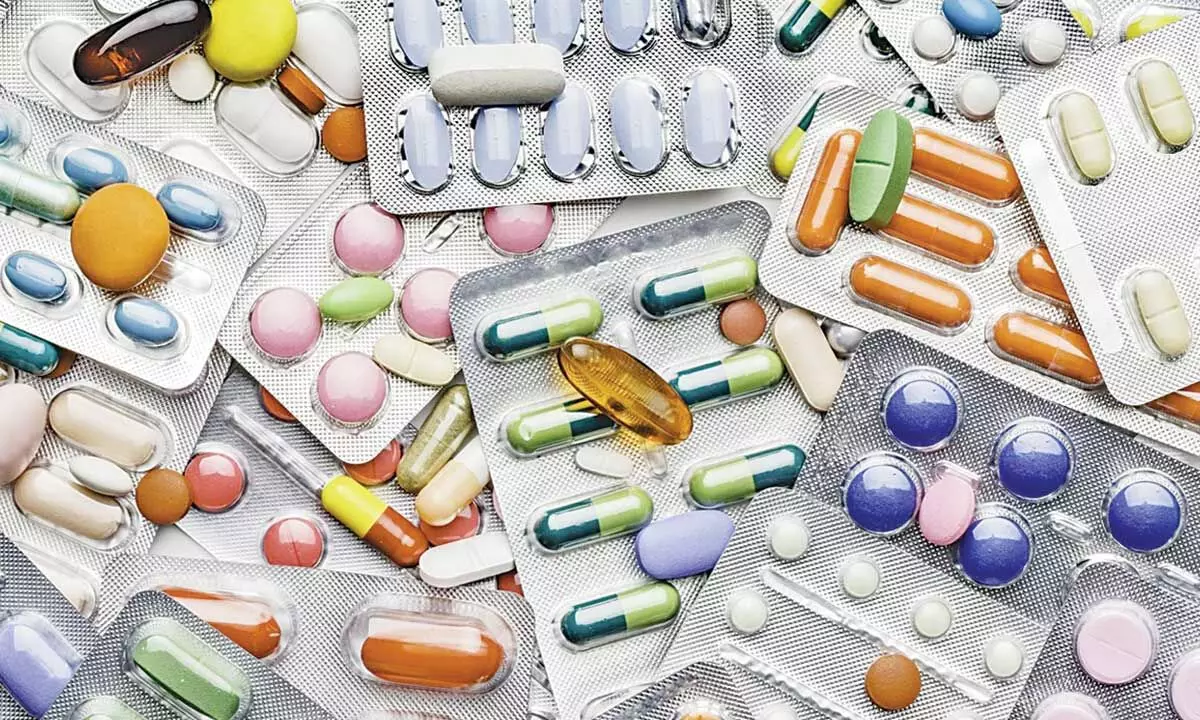India's fight against fake drugs
Govt’s move to make QR codes mandatory on top 300 drug brands will prevent the sale of counterfeit drugs; enhance credibility of pharma industry
image for illustrative purpose

Now, the introduction of QR code on medicine packages will offer transparency about the manufacturing process, contents of the medicines and the expiry date
In what can be termed as a big boost to the pharmaceutical industry's efforts to maintain the authenticity of medicines in the country, the Union Health Ministry on June 16 this year has issued a draft Rule making Quick Response (QR) codes mandatory on the packaging of top 300 brands of life-saving medicines from May 1, 2023. The draft Rule introduces a new Schedule H2 with a list of 300 top brands, and inserts a new sub-rule under the Rule 96, under the Drugs and Cosmetics Rules, 1945, after the sub-rule (5). As per the proposed new sub-rule named as (5A), the manufacturers of drug formulation products specified in the schedule H2 of the rule, should print or affix Barcode or QR code on its primary packaging label or, in the case of inadequate space in primary package label, on the secondary package label that store data or information legible with software application to facilitate authentication. The store data or information should include the particulars including unique product identification code, proper and generic name of the drug, brand name, name and address of the manufacturers, batch number, date of manufacturing and date of expiry along with the manufacturing license number. The list of 300 medicines included in the Schedule H2 include certain strengths of Aciloc, Amlokind, Ascoril D Plus New, Asthalin inhaler, Becosules Capsules, Actemra, Allegra, Betadine ointment, solution and gargle, Calpol, Combiflam, Foracort, Gelusil, Glycomet, Dolo 650 mg, Electral Sache, Fabiflu, Janumet, Lantus, etc.
The health ministry's move in this regard is in line with the recommendation of the Drugs Technical Advisory Board (DTAB), which is the highest decision-making body of the Union Health Ministry on technical matters. The DTAB in its last meeting held in November, 2021 had recommended introduction of barcode or QR code on the top 300 brands of medicine products available in the Indian market to help track and trace these brands, in line with the discussions it has been carrying out in the last couple of years. The DTAB, in an earlier meeting held in May, 2018, had also deliberated the matter and agreed for introduction of trace and track mechanism for major 300 pharmaceutical brands on a voluntary basis. The Board then informed that an order may be issued by the Drug Controller General of India (DCGI) to all the concerned to this effect. In fact, after the order, some of the pharmaceutical companies have already introduced bar coding systems in some of the brands. At the moment, QR codes are not mandatory. But, some big pharmaceutical companies are doing it voluntarily.
The Health Ministry has taken a well considered decision as it will help trace source and affirm authenticity of medicines while also improving patient health and safety. The QR code, which will prevent the sale of counterfeit drugs, will also verify whether a drug is genuine or counterfeit, and will include information such as the company, manufacturer, expiry date, and brand name, among other things. The QR code is not only done to identify misbranded or counterfeit pharmaceutical products but also will help to recall these products if there is a quality issue with the product. There are currently systems in place for recalling products based on the manual tracing of products that are distributed throughout the country. It may start from manufacturing premises to the CNF agents to wholesalers to distributors to retailers, to users. Currently, the recalling of medicines is done manually and it is a very difficult task. Through the QR code, this recalling system will become a simple process. It is true that the pharmaceutical companies leave no stones unturned to maintain the authenticity of medicines and to make sure that counterfeit medicines are eradicated from the market. Sale of counterfeit medicines has recently emerged as a global issue. Now, the introduction of QR code on medicine packages will offer transparency about the manufacturing process, contents of the medicines and the expiry date. A QR code can allow easier access to information on the prescribed medicine by the patient. The patient does not need to solely rely on the information physically printed on the packaging of the medicine. Also, the information about the medicine can be easily shared to others if required. The information stored through a QR code is much more dynamic and engaging, and these codes can even allow for better data monitoring by a pharmaceutical company. Overall, it is a welcome move by the government as the QR codes on the packaging of top 300 brands of life-saving medicines will go a long way in preventing distribution of counterfeit medicines and proper administration of medicines to patients. Definitely, the new step will come in handy for the pharmaceutical industry to improve its credibility.
(The author is freelance journalist with varied experience in different fields)

